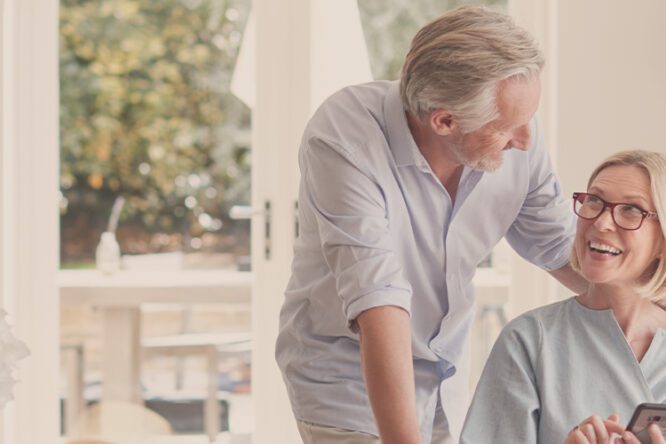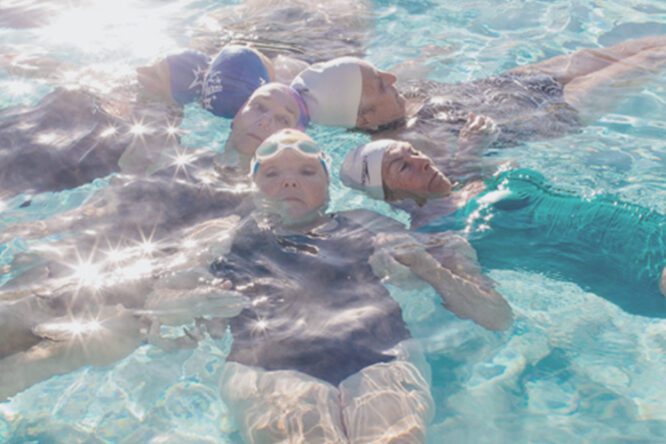It’s only been two years since Wallis Annenberg GenSpace opened in Koreatown. Already, this destination dedicated to enriching the lives of older adults is a runaway success. Its 200+ members spend four times the amount there than participants at most gathering spaces for older adults.
Research shows that about 5%–20% of people who are eligible to attend a senior center do, and they spend about three hours a month there. “Our members spend three hours signed up in a class every week — four times the amount of time that most members of senior centers spend,” said Jennifer Wong, Ph.D., Director of GenSpace. “That does not account for the time in which they are here sharing and socializing with other people.”
Jennifer came to GenSpace from academia and as a consultant for the California Department of Aging, where she worked with stakeholders to develop a master plan on aging. “Joining GenSpace was really a chance to work on the ground and invest in community spaces and to see what’s possible,” said Jennifer. “How do we stay engaged and open to feedback to co-create spaces for older adults, who are the backbone of our communities?”
Jennifer wants to help other creators of spaces for older adults enjoy GenSpace’s success. “We have had people come and visit us from as far away as South Africa and Korea — either seeking to add new energy to their current space and programming or create a new center. It’s been really great to be kind of a learning lab — a place to offer our suggestions and our path.”
Here, Jennifer shares nine insights that can help you design a new space for older adults or enrich your current programming.
Nine Principles for Creating Engaging Spaces for Older Adults
- Include older adults in the planning
“How can you create a space for older adults without including them in the process? Our program priorities were born out of research with focus groups in and around Koreatown. We asked older adults what they wanted and needed in a community space dedicated to them. The result? Programming in five categories: Financial security and safety; health and wellness; arts, crafts and culture; technology and devices; and social connection and storytelling. A sixth program priority is horticultural therapy, born out of a passion of our founder, Wallis Annenberg, to give back gardening and green space to people who may have lost access to it.”
- Find innovative ways of attracting members
“We went to libraries, senior affordable housing towers, and a foodbank to share our programs and invite potential members in.”
- Know your audience
“With our Koreatown location, there are up to 10 spoken languages here at a time. Our eldest member is 101 — older adults are no longer a monolith. Our team is sensitive to the needs of all of these cultures and ages.”
- Find the right people
“GenSpace is located in a beautiful age- and disability-friendly space created through a partnership with architect Susanne Stadler, but it is only as strong as the people in it. The reason why people come back is not because of the place, but because of the warm, welcoming and dedicated team members, instructors and volunteers.”
- Partner on programming
“Our incredible programming team creates wonderful opportunities and also partners with outside organizations to tailor their unique programs to GenSpace. A partnership with Music Mends Minds has brought musical and education programming designed for older adults with dementia to different audiences here. We also partnered with the YMCA to hire its most-attended instructors, resulting in fitness and wellness classes that are packed to capacity with a waitlist. Our horticultural therapist also partnered with LA Compost on a workshop series on the latest composting techniques and with an organization that specializes in growing and drying lavender.
- Pivot to meet your members’ needs
“Our members came to us and said ‘we’d love to have a knitting club’ — to work on their own projects and connect through knitting. We started a class, then expanded to crochet. They are some of my favorite classes. In another instance, Kiara Burns, an instructor who teaches a seated barre class, found it was getting so full that she used her experience with it to create a different class — a seated strength class.”
- Focus on change through education
“Through our leadership initiative, graduate students in the fields of gerontology, public health, occupational therapy and communications pair their academic knowledge with hands-on experience at GenSpace. Engaging with our members is the most important part of their academic career.”
- Connect with the outside community
“Our generous founder, Wallis Annenberg, has close ties to the entertainment industry, and we hold events that serve as a forum for debunking stereotypes around aging. We hosted Hollywood icons Jane Fonda, Lily Tomlin, Billy Porter and Sally Field, to celebrate their hit movie ’80 for Brady’ and talk about the importance of positive portrayals of older adults on screen.”
- Bring generations together on equal ground
“GenSpace has created a true multigenerational environment. Younger and older adults mentor each other in different areas, but it’s really about creating opportunities to share new experiences.”
Find more information about Wallis Annenberg GenSpace and its innovative programs here.



